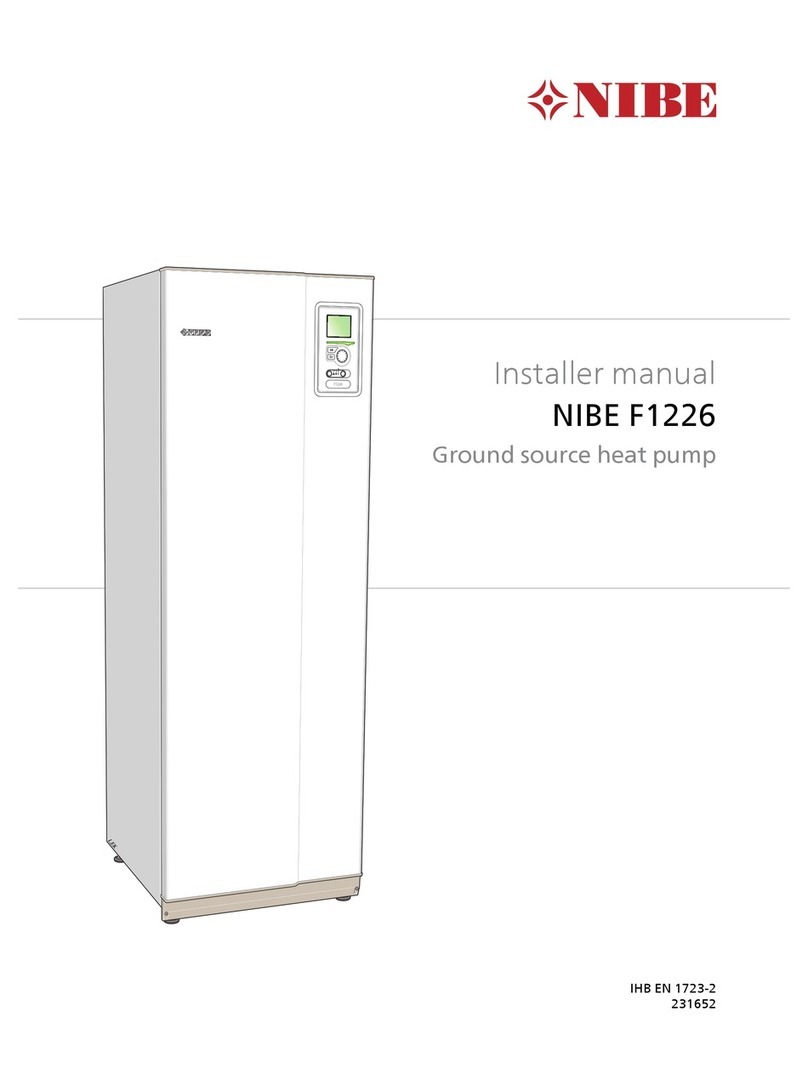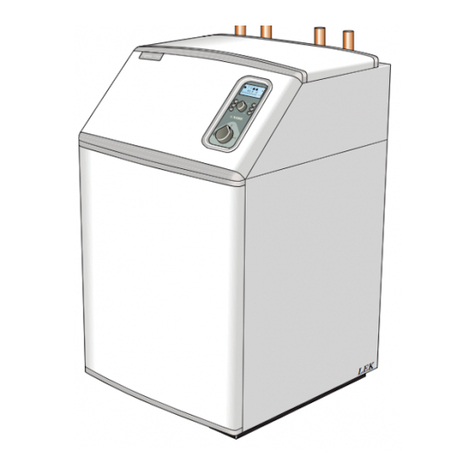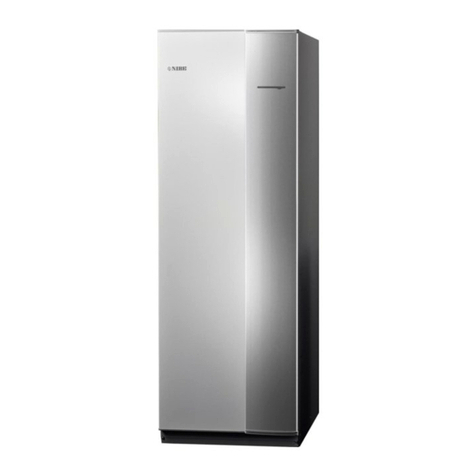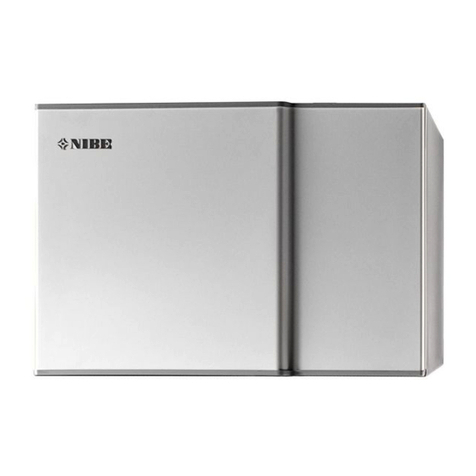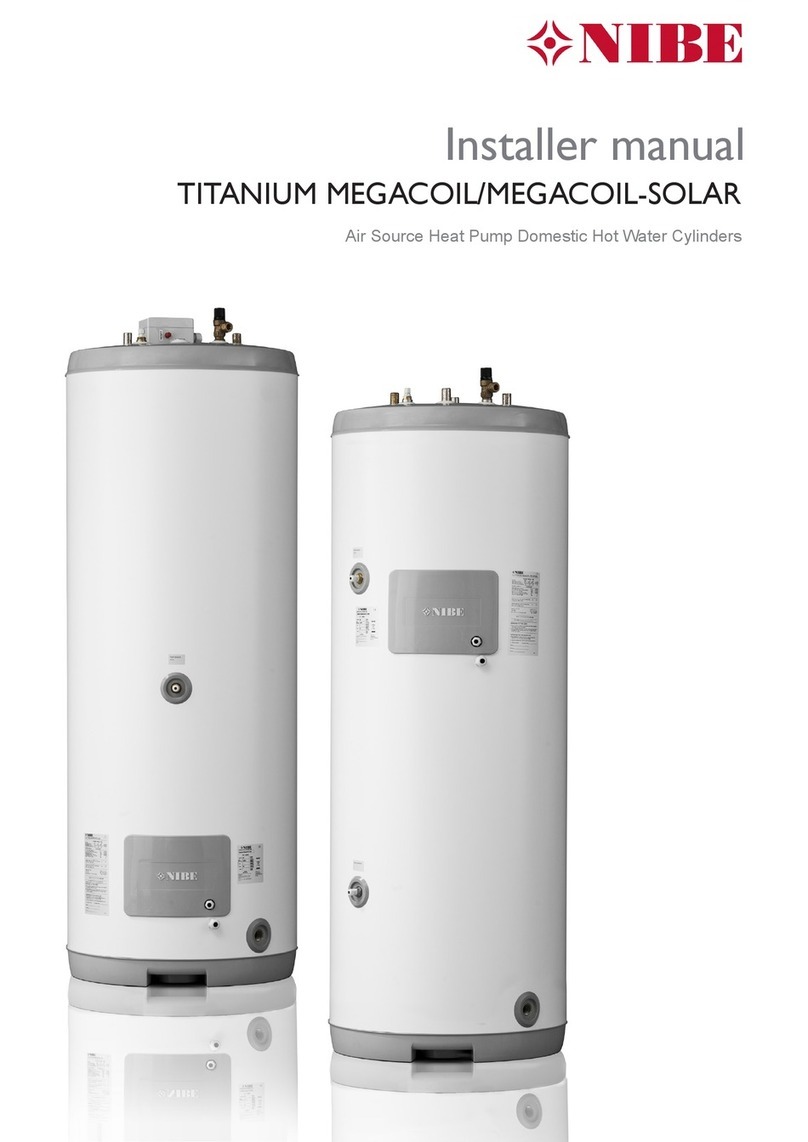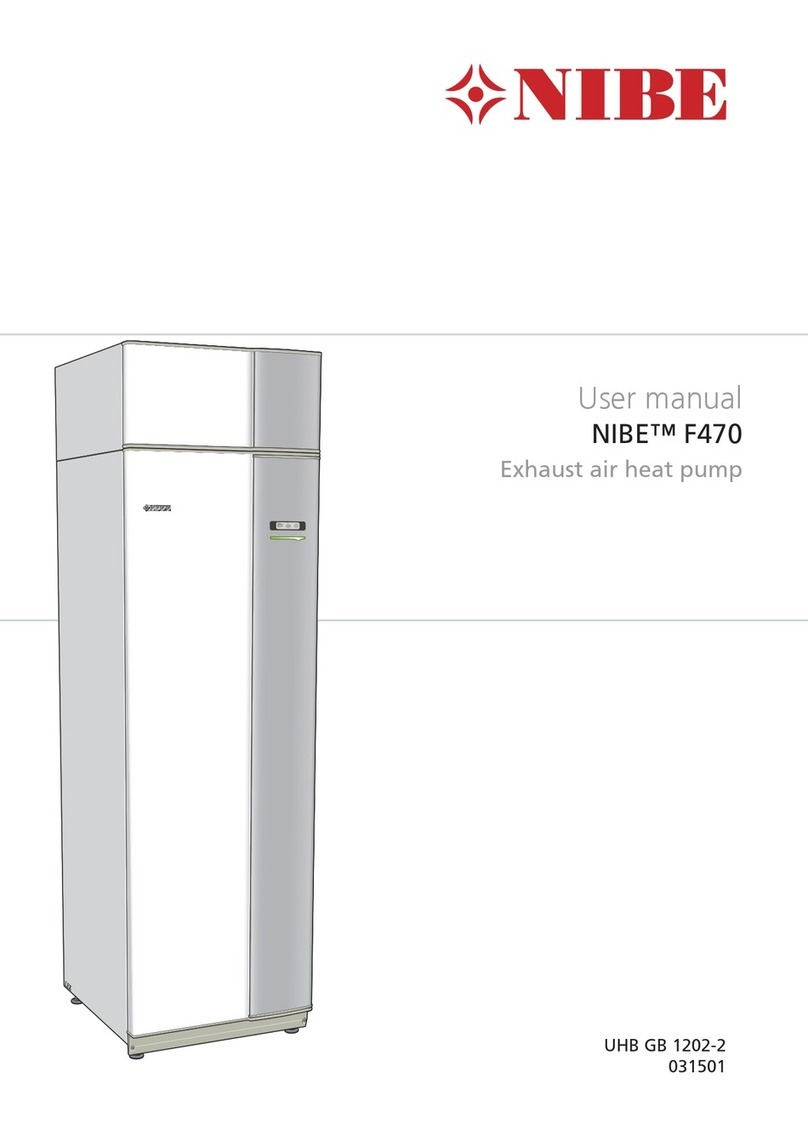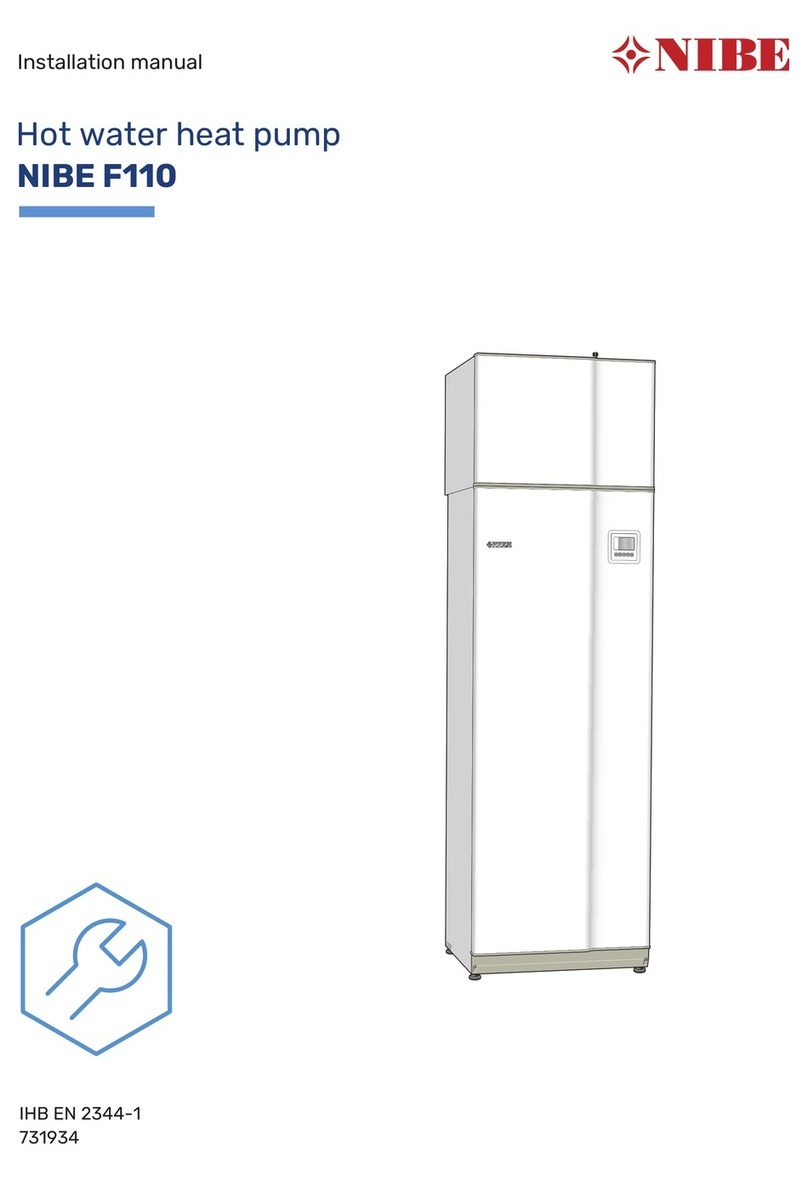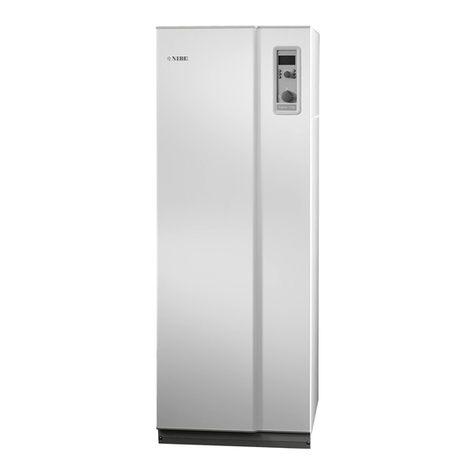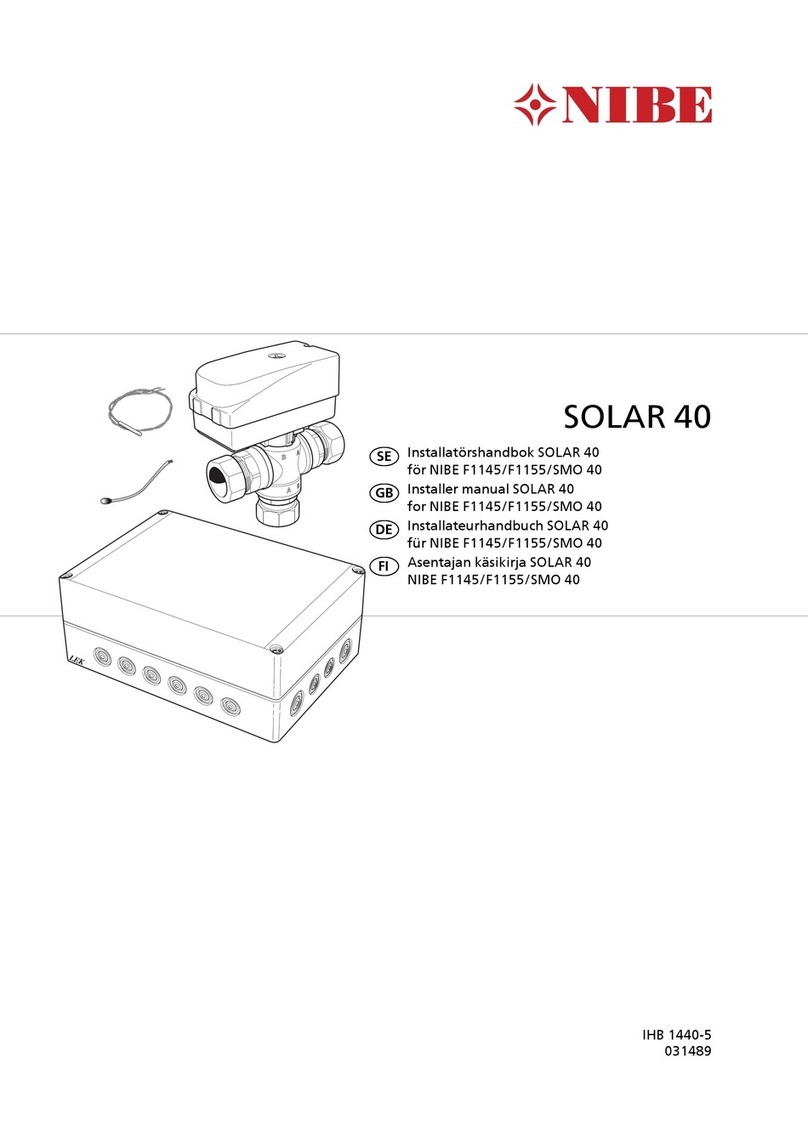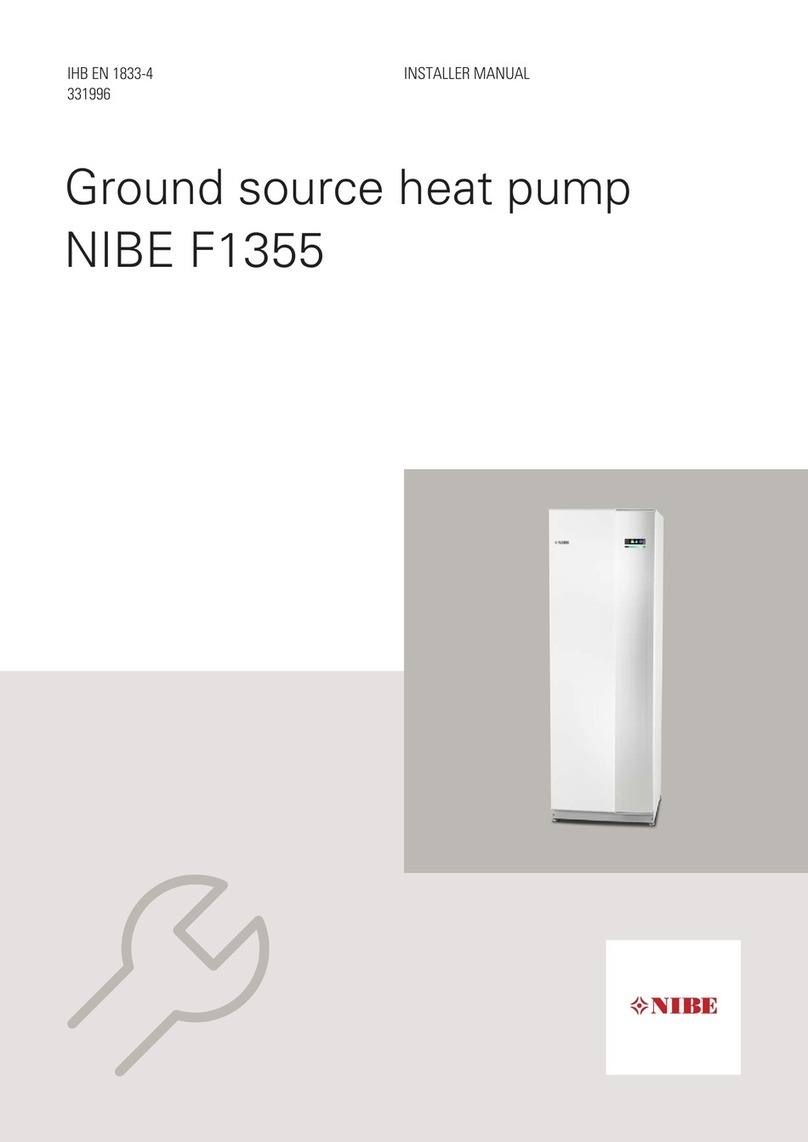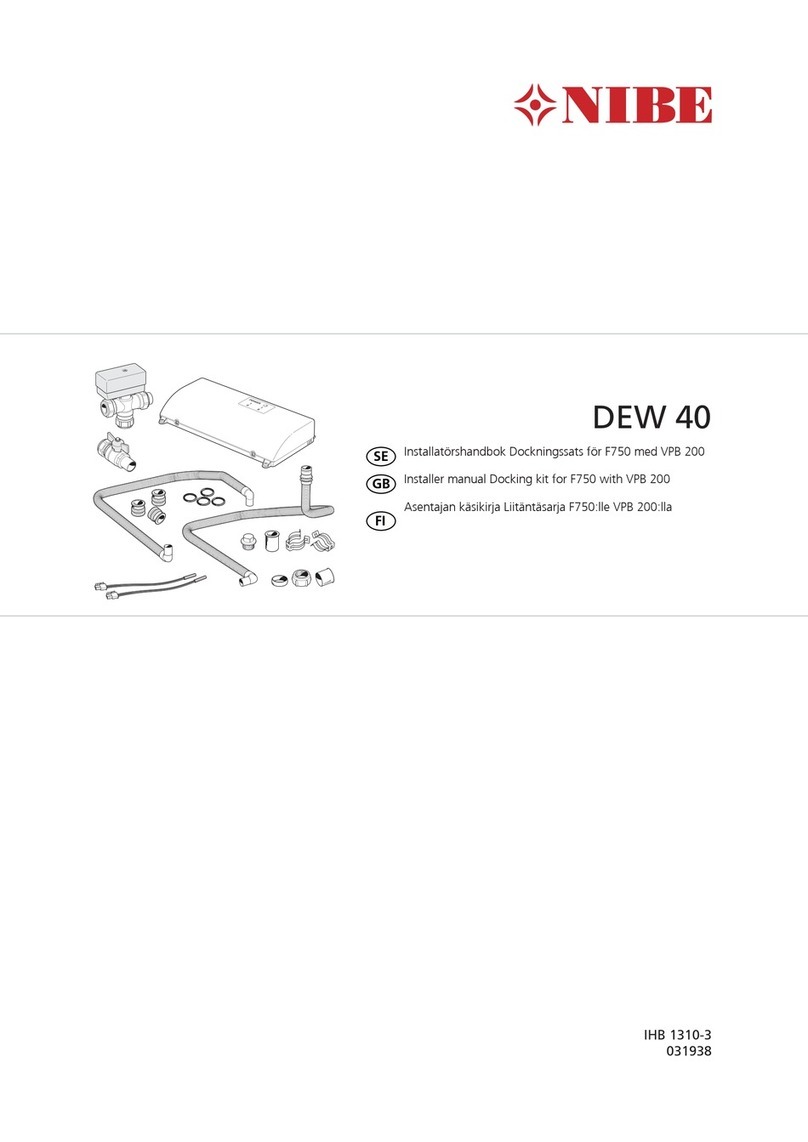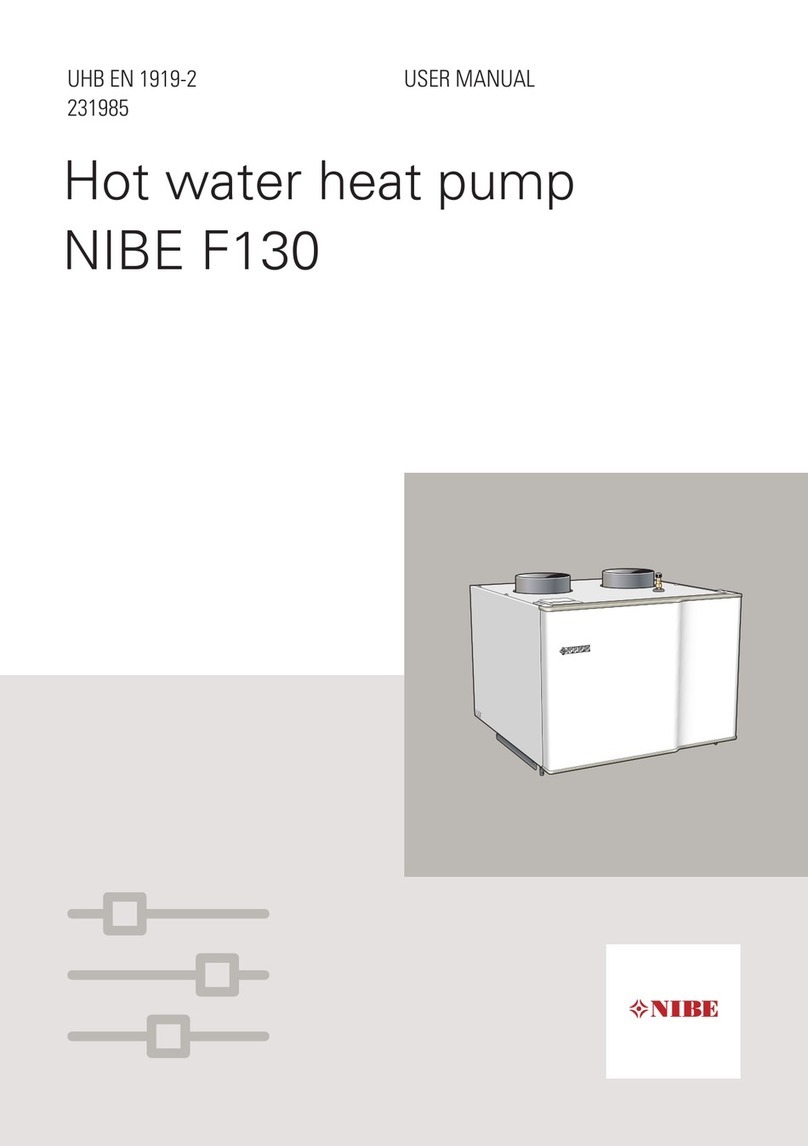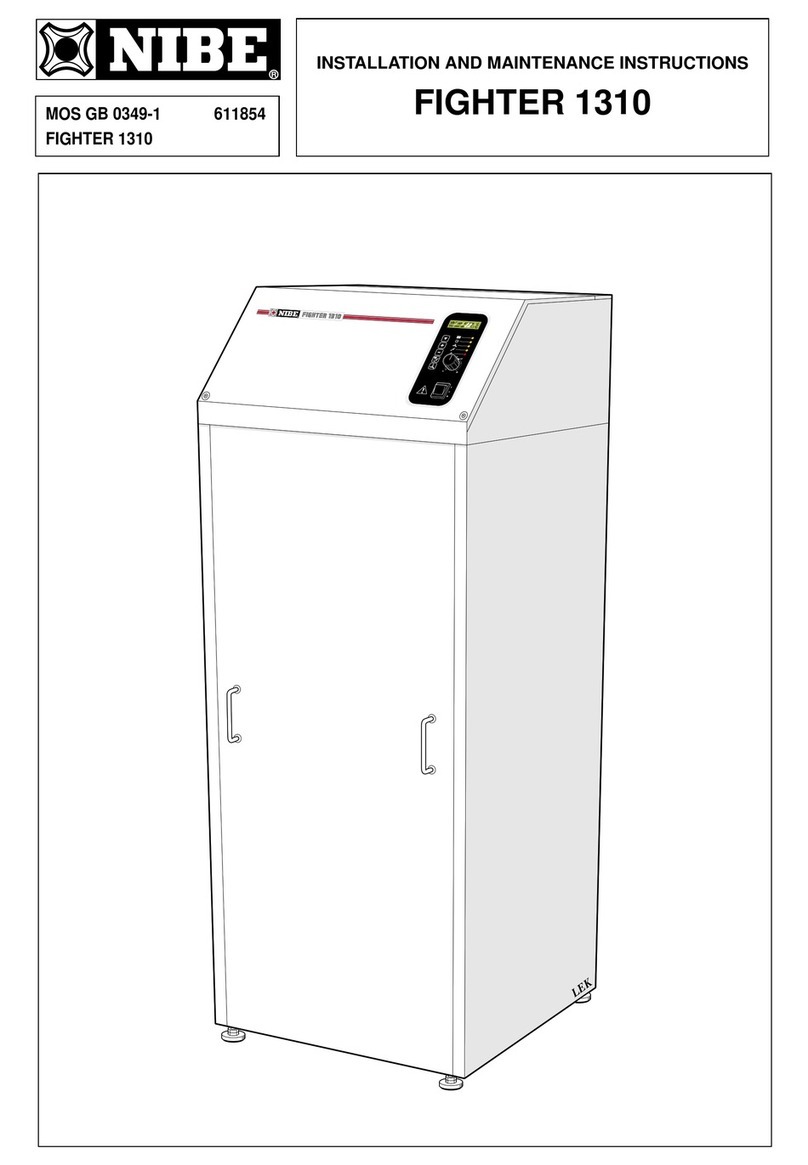
Safety information
This manual describes installation and service proced-
ures for implementation by specialists.
The manual must be left with the customer.
This appliance can be used by children
aged from 8 years and above and persons
with reduced physical, sensory or mental
capabilities or lack of experience and
knowledge if they have been given super-
vision or instruction concerning use of the
appliance in a safe way and understand
the hazards involved. The product is inten-
ded for use by experts or trained users in
shops, hotels, light industry, farming and
similar environments.
Children must be instructed/supervised to
ensure that they do not play with the appli-
ance.
Do not allow children to clean or maintain
the appliance unsupervised.
This is an original manual. It may not be
translated without the approval of NIBE.
Rights to make any design or technical
modifications are reserved.
©NIBE 2018.
SAFETY PRECAUTIONS
Caution
Install the system in full accordance with this installation manual.
Incorrect installation can cause bursts, personal injury, water leaks,
refrigerant leaks, electric shocks and fire.
Pay attention to the measurement values before working on the
cooling system, especially when servicing in small rooms, so that
the limit for the refrigerant’s concentration is not exceeded.
Consult an expert to interpret the measurement values. If the refriger-
ant concentration exceeds the limit, there may be a shortage of oxygen
in the event of any leak, which can cause serious injury.
Use original accessories and the stated components for the in-
stallation.
If parts other than those stated by us are used, water leaks, electric
shocks, fire and personal injury may occur as the unit may not work
properly.
Ventilate the working area well – refrigerant leakage may occur
during service work.
If the refrigerant comes into contact with naked flames, poisonous
gas is created.
Install the unit in a location with good support.
Unsuitable installation locations can cause the unit to fall and cause
material damage and personal injury. Installation without sufficient
support can also cause vibrations and noise.
Ensure that the unit is stable when installed, so that it can with-
stand earthquakes and strong winds.
Unsuitable installation locations can cause the unit to fall and cause
material damage and personal injury.
The electrical installation must be carried out by a qualified
electrician and the system must be connected as a separate cir-
cuit.
Power supply with insufficient capacity and incorrect function can
cause electric shocks and fire.
Use the stated cables for the electrical connection, tighten the
cables securely in the terminal blocks and relieve the wiring cor-
rectly to prevent overloading the terminal blocks.
Loose connections or cable mountings can cause abnormal heat pro-
duction or fire.
Check, after completed installation or service, that no refrigerant
leaks from the system in gas form.
If refrigerant gas leaks into the house and comes into contact with an
aerotemp, an oven or other hot surface, poisonous gases are produced.
Switch off the compressor before opening/breaching the refriger-
ant circuit.
If the refrigerant circuit is breached /opened whilst the compressor
is running, air can enter the process circuit. This can cause unusually
high pressure in the process circuit, which can cause bursts and per-
sonal injury.
Switch off the power supply in the event of a service or inspec-
tion.
If the power supply is not shut off, there is a risk of electric shocks
and damage due to the rotating fan.
Do not run the unit with removed panels or protection.
Touching rotating equipment, hot surfaces or high voltage parts can
cause personal injury due to entrapment, burns or electric shocks.
Cut the power before starting electrical work.
Failure to cut the power can cause electric shocks, damage and incor-
rect function of the equipment.
Care
Carry out the electrical installation with care.
Do not connect the ground lead to the gas line, water line, lightning
conductor or telephone line's ground lead. Incorrect grounding can
cause unit faults such as electric shocks due to short-circuiting.
Use main switch with sufficient breaking capacity.
If the switch does not have sufficient breaking capacity, malfunctions
and fire can occur.
Always use a fuse with the correct rating in the locations where
fuses are to be used.
Connecting the unit with copper wire or other metal thread can cause
unit breakdown and fire.
Cables must be routed so that they are not damaged by metal
edges or trapped by panels.
Incorrect installation can cause electric shocks, heat generation and
fire.
NIBE F2120Chapter 1 | Important information4
1 Important information
